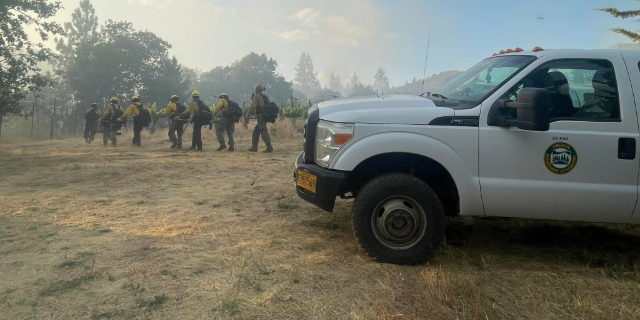Cities seek continued tax incentives, more state aid for public works
Published 4:58 pm Thursday, January 26, 2023
Officials from Oregon’s 241 cities want state legislators to continue tax breaks and increase aid for public works, both of which they say they need to maintain business investment and support more housing construction.
They are among eight priorities laid out by the League of Oregon Cities as more than 200 officials from 80 cities met legislators and heard from Gov. Tina Kotek and legislative leaders on Wednesday in Salem.
Up for renewal in 2025 are enterprise zones, where cities and counties can exempt new or expanding businesses from local property taxes for three to five years, and long-term rural enterprise zones. The latter designations are limited to counties with greater economic challenges, and exemptions can last from seven to 15 years.
The enterprise-zone program dates back to 1985. The current 76 zones are in 35 of Oregon’s 36 counties and 143 of its 241 cities.
Hermiston Mayor Dave Drotzmann, vice president of the league, said small cities like his lack the capacity or the authority to award grants or provide income-tax incentives to attract investment.
“These highly successful programs encourage businesses to grow in Oregon by temporarily exempting eligible investments in new plants and equipment from local property taxes,” he said.
“Without these tools, it makes it difficult for rural communities to recruit new businesses due to lack or services and amenities often found more prominently in metropolitan areas.”
Without the extensions, he added, “It would be turning back the clock in marginalized areas of our state that do not have the same competitive advantage that some of our metro areas have.”
In his own corner of northeast Oregon, Drotzmann said, among the business investments in such zones are data centers, food processing, food science and manufacturing – and they generate jobs that pay 130% of the average wage in Umatilla County.
According to a 2022 study by the Oregon Business Development Department based on 287 recently participating businesses, such zones have generated $8.5 billion in overall activity, 46,253 jobs, $2.5 billion in income and $685 million in personal income taxes.
“These new jobs are weighted heavily toward the manufacturing sector,” Drotzmann said.
According to a 2021 ECONorthwest study commissioned by Oregon Business & Industry and the Oregon Business Council, full-time median earnings in manufacturing are 17% greater than the overall median wage.
Another tax break
Not up for imminent renewal is another state-level tax break for business investment.
The Strategic Investment Program, which dates back to 1993, allows a 15-year exemption from property taxes for investments of at least $100 million in urban counties and $25 million in other counties. A companion program known as Gain Share, which dates back to 2007, allows for state payments that partly offset those property tax losses in participating counties. Payments are based on half the income taxes generated by new or retained job resulting from those investments.
Of the nine participating counties, Washington County by far has been the largest beneficiary of Gain Share because of its large agreements with Intel and Genentech. Most of the others involve wind energy generation. One of two Intel agreements is near the 15-year endpoint, but the second has several years to go.
“The footprint for that investment extends well beyond Washington County,” said Jim McCauley, the league’s legislative director. He was Washington County’s lobbyist in 2015, when lawmakers renewed Gain Share but capped annual payments to a single county at $16 million. “Everybody can show some level of benefit from just one investment.”
He said the $100 billion investment by Intel fed a network of related businesses and benefited education and training programs at Portland Community College, Portland State University and Oregon State University. (The amount, coincidentally, is equal to what Intel just pledged for new manufacturing plants near Columbus, Ohio.)
“With nine counties having the chance to participate in the program, I think they have shown it is an incredible tool and has value well beyond the county or community that has had the opportunity to take advantage of it,” McCauley said. “It’s a tool that needs to be in the toolbox long term.”
Public works aid
Meanwhile, another league official says Oregon must boost its support of public works for communities – particularly aging water and sewer systems – not only to prepare large industrial sites for semiconductor and other manufacturing but to allow for expanded housing construction.
One often-cited report pegged Oregon’s deficit of housing units at 111,000 short during the past decade – half of them needed by families earning less than the area median income. Gov. Tina Kotek has called for an annual production target of 36,000 units – 80% greater than the annual average over the past five years – though she has announced a 25-member council to advise her and lawmakers how to reach that goal. The target takes into account the projected need over two decades.
“Cities have extremely limited tools to address the rising costs of infrastructure necessary to supply the development needs of housing,” said Taneea Browning, a Central Point city councilor and immediate past president of the league. “This is especially true in small cities and more rural markets, where land readiness costs are prohibitive for local budgets.”
Of 100 cities that responded to a 2021 league survey, she said, water upgrade needs were tagged at $9.7 billion – and Portland State University estimated a total of $23 billion statewide over the next two decades.
Housing and business are not the only ones necessitating water and sewer upgrades. Browning said other factors are the aging of current pipes and systems, their ability to withstand the shock of a major earthquake off the Oregon coast, the growing severity of storms and droughts resulting from climate change, and stricter treatment standards for drinking water, stormwater and wastewater.
Browning said the 2021 federal law that provides more than $1 trillion for public works upgrades nationally will help. But she said Oregon needs to boost state investment in its special public works fund for small communities, plus brownfield redevelopment and preparation of regionally significant industrial sites.
“Oregon simply cannot afford this cost alone,” she said. “However, funding gaps still exist, and we want to keep up momentum. Continued investment is critical to support community public health, economic development, environmental protection and needed housing.”
Browning also called for better coordination of state agency efforts on water supply.
“While infrastructure is not sexy, it is absolutely important,” she said.






